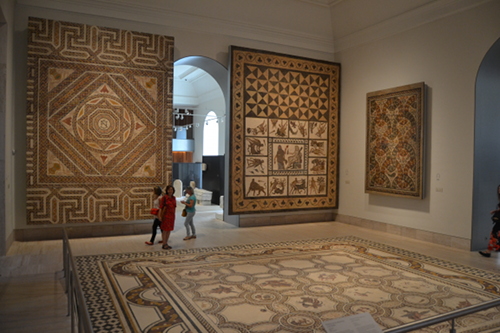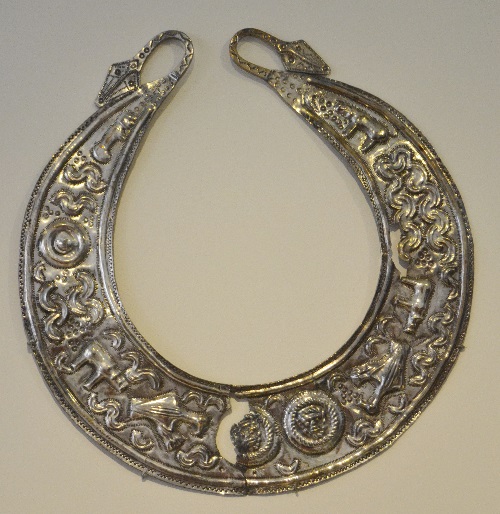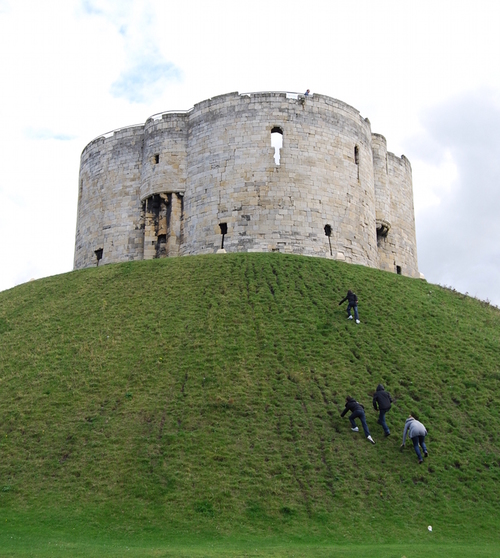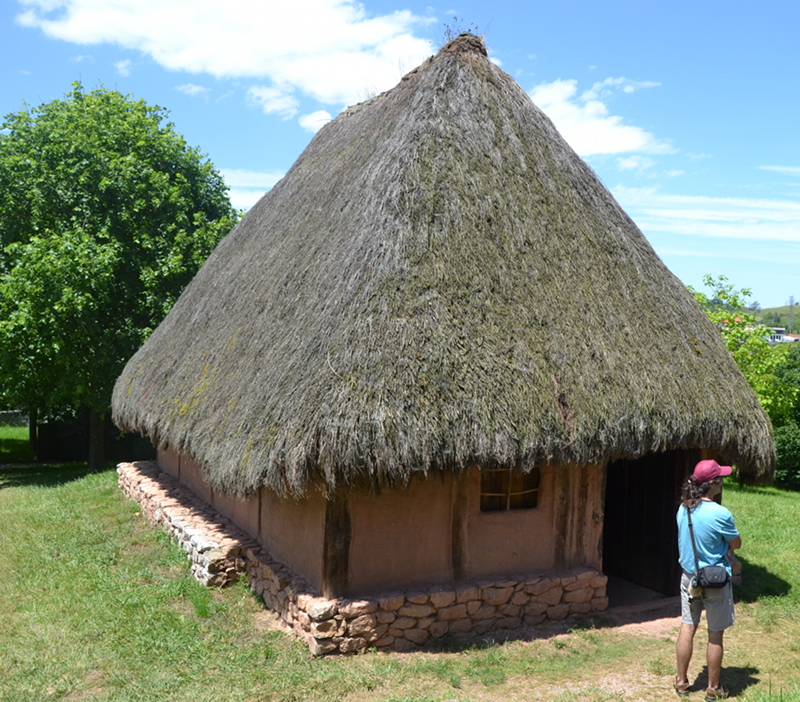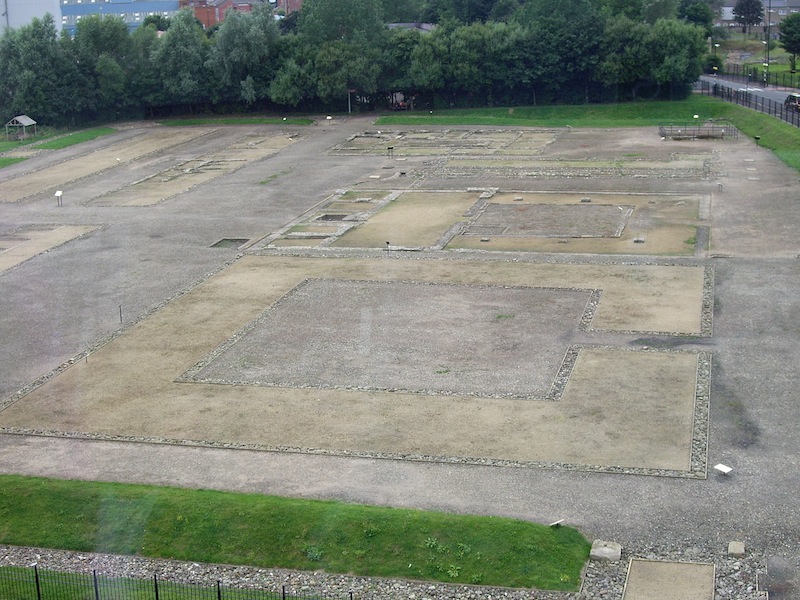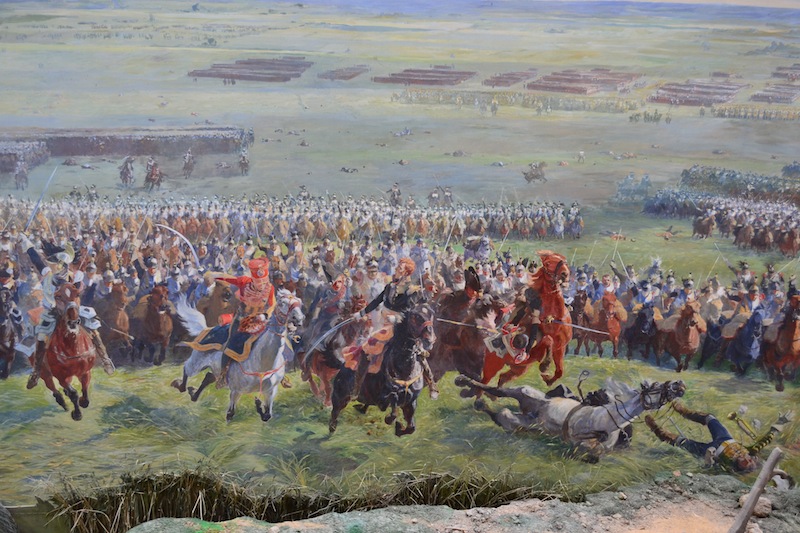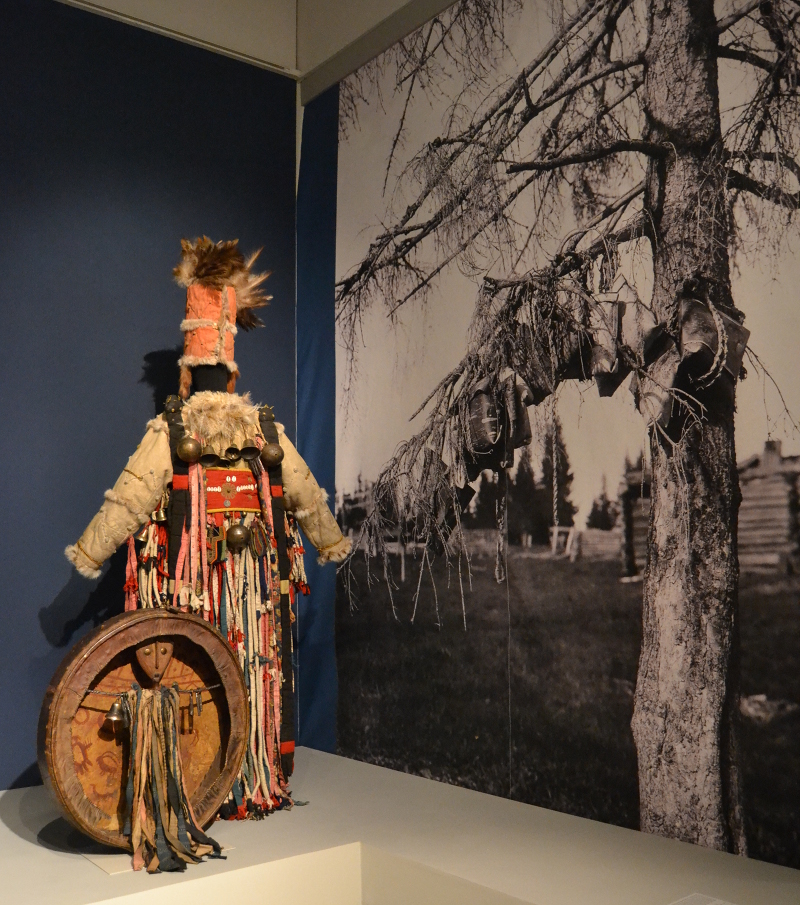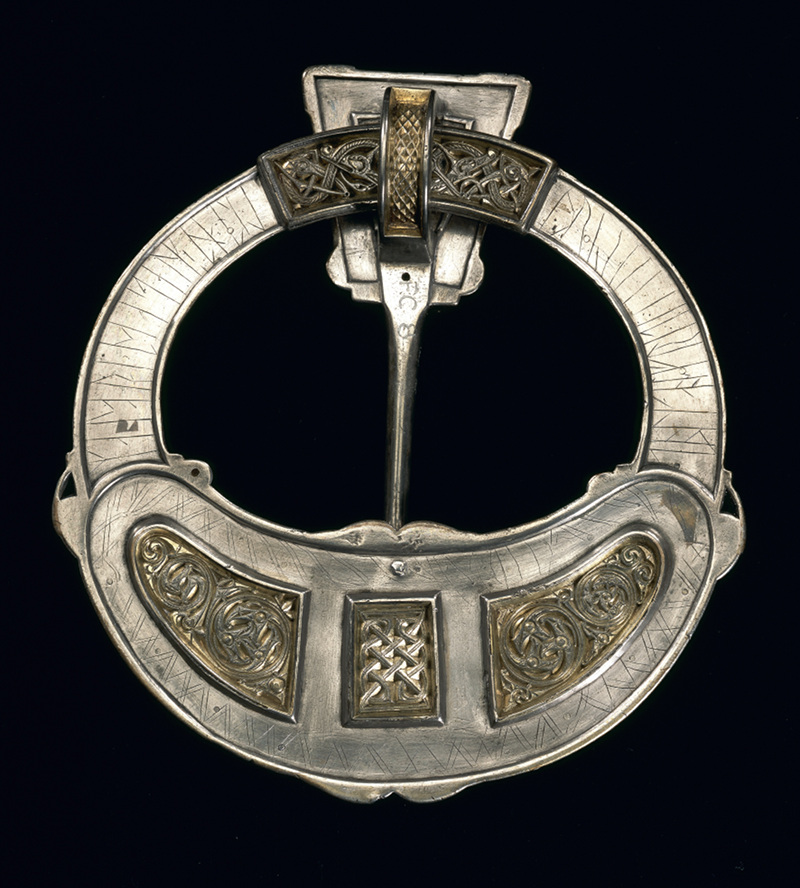
The Hunterston Brooch, c. 700, Hunterston, Ayrshire, Scotland. Gold, silver, amber. Diam. 12.2cm.
Runic inscription says, ”Melbrigda owns this brooch.’ Copyright National Museums Scotland.
They journeyed boldly;
Went for gold,
Fed the eagle
Out in the east,
And died in the south
In Saracen land.
— Gripsholm Runestone (AD 1000-1100)
The British Museum has come up with another blockbuster with its new exhibition, Vikings: Life and Legend. Bringing together hundreds of artifacts from around the world, this massive exhibition tells about Norse life, art, and beliefs through everyday objects, works of art, magical objects, and even an entire Viking ship.
There are many surprises. For example, a whalebone axehead from Greenland dating to 1000-1300 AD shows that far-flung Norsemen in harsh regions used whatever material they had at hand. I’m sure the owner of this axehead wanted a real one of iron — the axe appears to have broken at the socket! There are also charming reminders of family life, such as some wooden toy boats from Dublin dating to around 800-1050 AD.
…
Read More Read More
